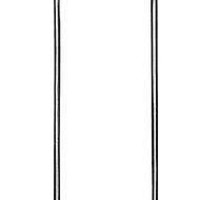DE2E3KH222MA3B Murata, DE2E3KH222MA3B Datasheet - Page 20

DE2E3KH222MA3B
Manufacturer Part Number
DE2E3KH222MA3B
Description
Ceramic Disc Capacitors Class X1 Y2 2200pF 250Vac E 20%
Manufacturer
Murata
Series
DE2r
Specifications of DE2E3KH222MA3B
Voltage Rating
250 Volts
Operating Temperature Range
- 25 C to + 125 C
Termination Style
Radial
Product
Ceramic Disc Capacitors - Other Various
Dimensions
10 mm Dia.
Capacitance
2200 pF
Tolerance
20 %
Temperature Coefficient
E
Lead Spacing
7.5 mm
Capacitor Dielectric Type
CERAMIC DISC AND PLATE
Tolerance,
20%
Tolerance, -
20%
Temp, Op. Max
125(DEGREE C)
Temp, Op. Min
-25(DEGREE C)
Pitch,
ROHS COMPLIANT
Lead Free Status / RoHS Status
Lead free / RoHS Compliant
5
!Note
Operating Temperature Range: -25 to +85 C
18
No.
DEJ Series Specifications and Test Methods
1
2
3
4
5
6
7
8
9
DEJ Series (Which Meet Japanese Law) Specifications and Test Methods
Appearance and Dimensions
Marking
Capacitance
Dissipation Factor
(D.F.)
Insulation Resistance (I.R.)
Dielectric
Strength
Temperature Characteristics
Discharge
Test
Solderability of Leads
• Please read rating and !CAUTION (for storage, operating, rating, soldering, mounting and handling) in this catalog to prevent smoking and/or burning, etc.
• This catalog has only typical specifications because there is no space for detailed specifications. Therefore, please review our product specifications or consult the approval sheet for product specifications before ordering.
Item
Between Lead
Wires
Body
Insulation
Appearance
I.R.
Dielectric
Strength
No visible defect, and dimensions are within
specified range.
To be easily legible
Within specified tolerance
10000M min.
No failure
No failure
No marked defect
1000M min.
Per Item 6
Lead wire should be soldered with uniform coating
on the axial direction over 3/4 of the circumferential
direction.
Char.
Char.
E
F
E
F
Capacitance Change
Specifications
Specifications
Within
Within
D.F.V2.5%
D.F.V5.0%
+20
+30
–55
–80
%
%
The capacitor should be visually inspected for evidence of
defect.
Dimensions should be measured with slide calipers.
The capacitor should be visually inspected.
The capacitance should be measured at 20˚C with 1 0.1kHz
and AC5V(r.m.s.) max.
The dissipation factor should be measured at 20˚C with
1 0.1kHz and AC5V(r.m.s.) max.
The insulation resistance should be measured with
The capacitor should not be damaged when AC1500V(r.m.s.)
are applied between the lead wires for 60 sec.
First, the terminals of the capacitor should be connected
together. Then, as shown in the figure at right,
the capacitor should be immersed
into 10% salt solution up to a position
of about 3 to 4mm apart from the
terminals.
Finally, AC1500V(r.m.s.) is applied
for 60 sec. between the capacitor lead
wires and electrode plate.
The capacitance measurement should be made at each step
specified in Table 1.
As in Figure 1, discharge is made 50 times at 5 sec. intervals
from the capacitor (Cd) charged at DC voltage of specified.
C
S: High-voltage switch
R
The lead wire of a capacitor should be dipped into molten
solder for 2 0.5 sec.
The depth of immersion is up to about 1.5 to 2.0mm from the
root of lead wires.
Temp. of solder: Lead Free Solder (Sn-3Ag-0.5Cu) 245 5 C
DC500 50V within 60 5 sec. of charging.
t
1
: Capacitor under test
: 1000
Step
Cd
Vs
1
2
3
4
5
Vs
H63 Eutectic Solder 235 5 C
<Table 1>
Temperature (ºC)
R
3
DC10kV
0.001 F
Test Method
-25 2
20 2
20 2
85 2
20 2
S
Fig.1
Continued on the following page.
Cd
R
R
2
3
: 100M
: Surge resistance
R
1
Ct
10% Salt Solution
R
2
About
3 to 4mm
Electrode
Plate
C85E.pdf
Jul.13,2011











